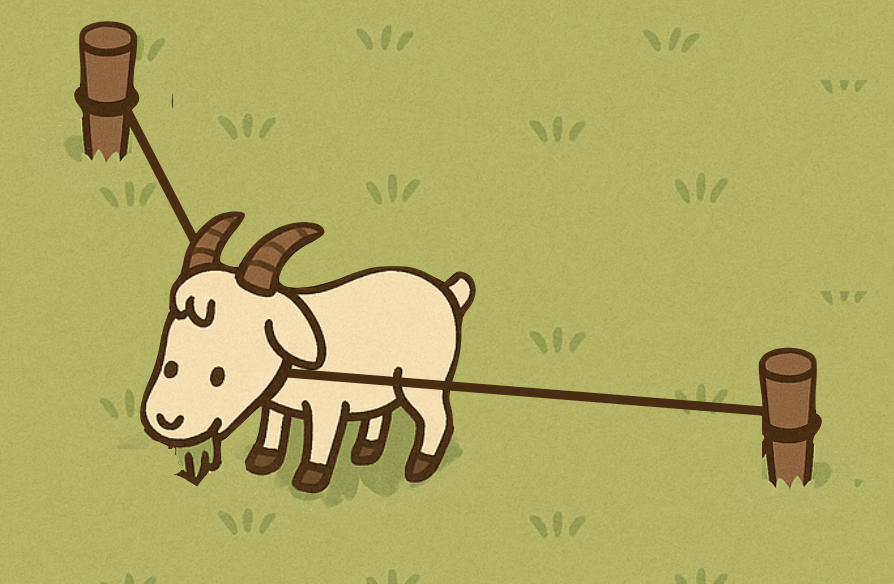Problems
On another day, Robinson Crusoe used two pegs again. This time, he tied one rope of length \(a\) to the first peg and another rope of length \(b\) to the second peg, both directly to the goat, so that it looked like in the picture below. What shape did the goat graze that day?

One day Robinson Crusoe went for a walk on a plateau, taking his goat with him on a rope of length one meter. He walked along a path in the shape of a rectangle measuring \(1 \,\text{km} \times 3 \,\text{km}\), following its perimeter. What was the shape of the area where the goat could graze while walking with Robinson?
Draw how Robinson Crusoe should use pegs, ropes, and sliding rings to tie his goat in order for the goat to graze grass in the shape of a semicircle.
Draw a picture how Robinson could have used pegs and ropes to tie the wolf and the goat so that the goat grazed an area in the shape of a ring (like a disc with a hole in the middle).
Can two tied wolves keep an untied goat in a triangle?
A rectangle is made up from six squares. Find side length of the largest square if side length of the smallest square is 1.
This shape below is made up from squares.
Find side length of the bottom square if side length of the smallest square is equal to 1.
You are given a convex quadrilateral. Is it always possible to cut out a parallelogram out of the quadrilateral such that three vertices of the new parallelogram are the vertices of the old quadrilateral?
The edges of a cube are assigned with integer values. For each vertex we look at the numbers corresponding to the three edges coming from this vertex and add them up. In case we get 8 equal results we call such cube “cute”. Are there any “cute” cubes with the following numbers corresponding to the edges:
(a) \(1, 2, 3, 4, 5, 6, 7, 8, 9, 10, 11, 12\);
(b) \(-6, -5, -4, -3, -2, -1, 1, 2, 3, 4, 5, 6\)?
The area of a rectangle is 1 cm\(^2\). Can its perimeter be greater than 1 km?